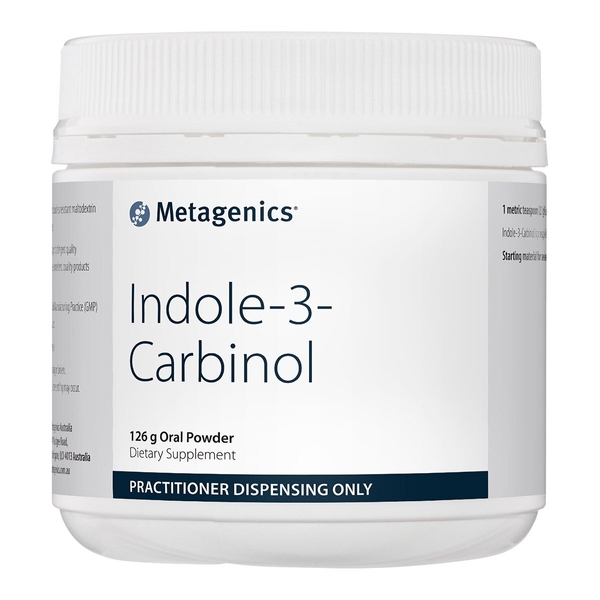
Indole-3-carbinol
Scientific names: Indole-3-carbinol
Alternative names: 1H-Indole-3-methanol, 1H-indol-3-ylmethanol, 3-Hydroxymethyl Indole, 3 Hydroxymethyl Indole, I3C, Indole 3 Carbinol, Indole-3-Methanol, 3-(hydroxymethyl), 3-(hydroxyméthyl), 3 (hydroxymethyl) Indole, 3-Indolylcarbinol, 3 Indolylcarbinol, 3-Indolylmethanol, 3 Indolylmethanol, Indinole, Indole, Indole-3-méthanol
Actions: Antiestrogenic, Antineoplastic, Antifertility, Antiviral, Procarcinogenic, Systemic lupus erythematosus (SLE)
Background
Indole-3-carbinol comes from a substance called glucobrassicin, which is found in cruciferous vegetables such as broccoli, cauliflower, and kale.
The amount of glucobrassicin found in vegetables varies depending on the plant, soil, rainfall, amount of sunlight, and other factors. Indole-3-carbinol is formed when these vegetables are cut, chewed or cooked. It might have effects that prevent the growth of certain types of cancer cells.
People use indole-3-carbinol for cancer prevention, liver disease, fibromyalgia, and many other conditions, but there is no good scientific evidence to support these uses.
Don't confuse indole-3-carbinol with cruciferous vegetables, such as broccoli, or with other chemicals found in these vegetables such as ascorbigen, diindolylmethane, or sulforaphane. These are not the same.
The amount of glucobrassicin found in vegetables varies depending on the plant, soil, rainfall, amount of sunlight, and other factors. Indole-3-carbinol is formed when these vegetables are cut, chewed or cooked. It might have effects that prevent the growth of certain types of cancer cells.
People use indole-3-carbinol for cancer prevention, liver disease, fibromyalgia, and many other conditions, but there is no good scientific evidence to support these uses.
Don't confuse indole-3-carbinol with cruciferous vegetables, such as broccoli, or with other chemicals found in these vegetables such as ascorbigen, diindolylmethane, or sulforaphane. These are not the same.
Safety Safety definitions
When taken by mouth: Indole-3-carbinol is possibly safe when used in doses up to 400 mg daily for 3-76 months. Side effects might include balance problems, diarrhea, nausea, rash, and tremors.
Children: Indole-3-carbinol is possibly safe when taken by mouth appropriately. Doses of 6-17 mg/kg body weight have been safely used in children and teenagers for 12-76 months.
Bleeding conditions: Indole-3-carbinol might slow blood clotting. Taking indole-3-carbinol might increase the risk of bleeding in people with bleeding disorders.
Surgery: Indole-3-carbinol might slow blood clotting. Taking indole-3-carbinol might cause bleeding complications during surgery. Stop taking indole-3-carbinol at least 2 weeks before surgery.
Special Precautions & Warnings:
Pregnancy and breast-feeding: There isn't enough reliable information to know if indole-3-carbinol is safe to use when pregnant or breast-feeding. Stay on the safe side and avoid use.Children: Indole-3-carbinol is possibly safe when taken by mouth appropriately. Doses of 6-17 mg/kg body weight have been safely used in children and teenagers for 12-76 months.
Bleeding conditions: Indole-3-carbinol might slow blood clotting. Taking indole-3-carbinol might increase the risk of bleeding in people with bleeding disorders.
Surgery: Indole-3-carbinol might slow blood clotting. Taking indole-3-carbinol might cause bleeding complications during surgery. Stop taking indole-3-carbinol at least 2 weeks before surgery.
Effectiveness
Effective Effectiveness definitions
There is interest in using indole-3-carbinol for a number of purposes, but there isn't enough reliable information to say whether it might be helpful.
Dosing & administration
Indole-3-carbinol has most often been used by adults at a dose of 200 mg by mouth twice daily for up to 5 years. Speak with a healthcare provider to find out what dose might be best for a specific condition.
Interactions with pharmaceuticals
Estrogens
Interaction Rating=Moderate Be cautious with this combination.
Indole-3-carbinol might interfere with the effects of estrogen therapy.
Medications changed by the liver (Cytochrome P450 1A2 (CYP1A2) substrates)
Interaction Rating=Moderate Be cautious with this combination.
Some medications are changed and broken down by the liver. Indole-3-carbinol might change how quickly the liver breaks down these medications. This could change the effects and side effects of these medications.
Medications that slow blood clotting (Anticoagulant / Antiplatelet drugs)
Interaction Rating=Moderate Be cautious with this combination.
Indole-3-carbinol might slow blood clotting. Taking indole-3-carbinol along with medications that also slow blood clotting might increase the risk of bruising and bleeding.
Interactions with herbs & supplements
Herbs and supplements that might slow blood clotting: Indole-3-carbinol might slow blood clotting and increase the risk of bleeding. Taking it with other supplements with similar effects might increase the risk of bleeding in some people. Examples of supplements with this effect include garlic, ginger, ginkgo, nattokinase, and Panax ginseng.
Interactions with foods
There are no known interactions with foods.
vital.ly has licensed monographs from TRC Healthcare.
This monograph was last reviewed on 14/02/2025 11:00:00. Monographs are reviewed and/or updated multiple times per month and at least once per year.
Natural Medicines disclaims any responsibility related to medical consequences of using any medical product. Effort is made to ensure that the information contained in this monograph is accurate at the time it was published. Consumers and medical professionals who consult this monograph are cautioned that any medical or product related decision is the sole responsibility of the consumer and/or the health care professional. A legal License Agreement sets limitations on downloading, storing, or printing content from this Database. No reproduction of this monograph or any content from this Database is permitted without written permission from the publisher. It is unlawful to download, store, or distribute content from this site.



